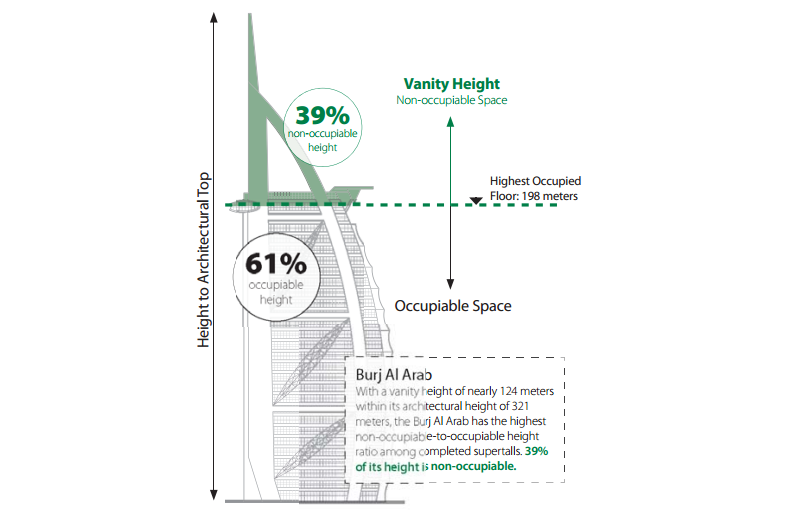The Dark Secret of The World's Tallest Skyscrappers
By
The Council on Tall Buildings and Urban Habitat, a not-for-profit organization that tracks the world's skyscrapers, has released some data on the subject. CTBUH found that nearly 60 percent of the world's supertalls wouldn't actually be supertalls at all without the added wasteful space that the organization calls “vanity height”.

The Burj Khalifa, the tallest building in the world at nearly 830 meters, has 244 meters of unoccupied space. To put that in context, if that 244 meters were itself a building, it would be the 11th tallest in Europe. The worst offender of all is the Burj Al Arab, also in the U.A.E., of which 39 percent is vanity spire. This is followed by two more skyscrapers again from U.A.E. - Emirates Tower One and Emirates Tower Two with respectively, 32% and 31% of unoccupied height. Apparently, U.A.E leads the pack, but China and the US are close on heels.
The trend is not necessarily a new one - the Chrysler Building and the Empire State Building of New York City are two of the earliest examples of this growing phenomenon. The practice started in the 1930s, but remained dormant for half a century, before making a brief appearance during the mid-1970s, then really hit the roof after 2000. According to the findings of CTBUH, out of the 74 completed supertalls with vanity heights, as many as 65 were constructed after 1990. Buildings constructed after 1999 have an average vanity height of 16%.
You can read the full report from CTBUH here.


No comments:
Post a Comment